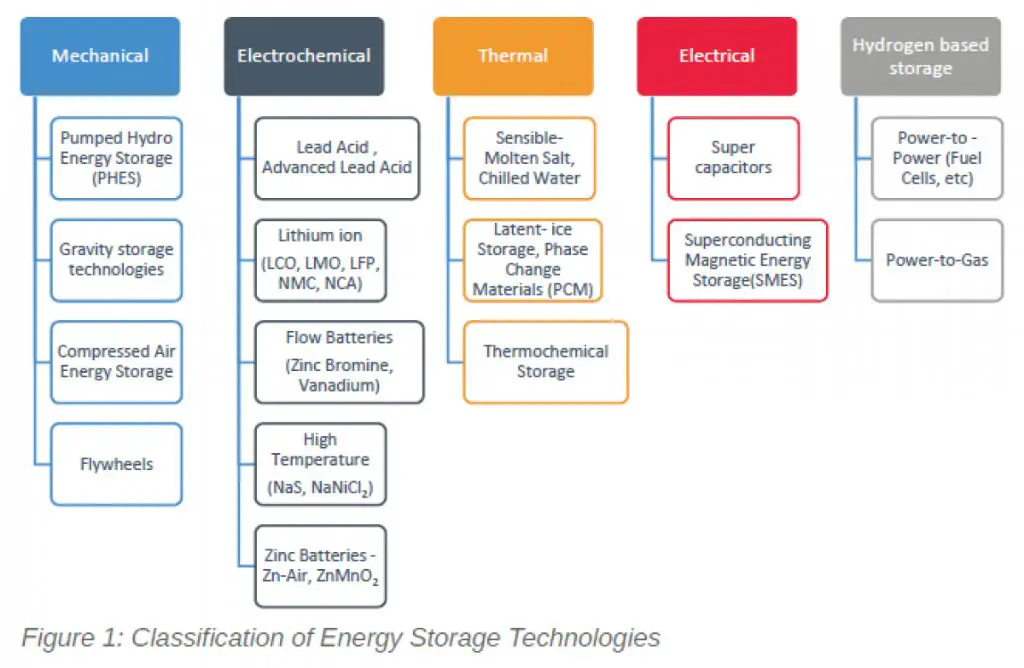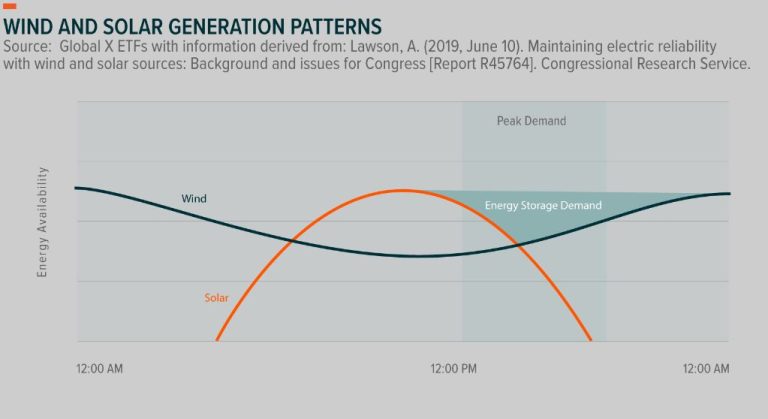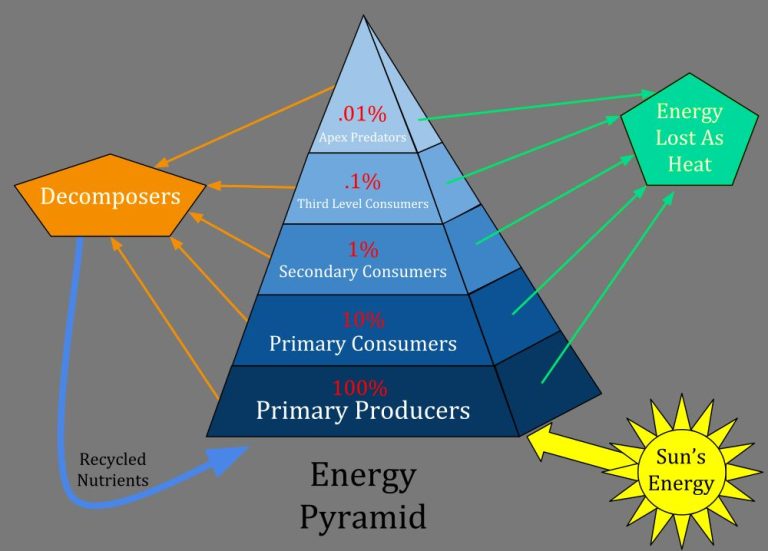What Is The Storage Of Energy Called?
What is Energy Storage?
Energy storage refers to the capture of energy produced at one time for use at a later time to help manage imbalances between energy demand and supply. It involves converting energy from forms that are difficult to store (such as electricity) into storable forms (such as chemical, thermal, kinetic or potential energy). The stored energy can then be converted back into usable forms when needed.
Energy storage provides greater flexibility and reliability in energy systems by allowing excess energy to be captured, rather than curtailed, and used at times of higher demand. It also enables better integration of variable renewable energy sources like solar and wind power into the grid. Energy can be stored at a variety of scales, from large grid-connected systems to smaller distributed systems, for periods ranging from seconds to months.
In essence, energy storage provides a reservoir of power that can be tapped into whenever required, helping to balance energy supply and demand. It is a key enabling technology for renewable energy and a more resilient and efficient energy infrastructure overall.
Types of Energy Storage Technologies
There are several major categories of energy storage technologies that each work in different ways:
Mechanical Storage
Mechanical energy storage involves converting electricity into kinetic or potential energy and then converting it back to electricity when needed. Examples include pumped hydroelectric storage, compressed air energy storage (CAES), and flywheels. These technologies use mechanical means to store energy.
Electrochemical Storage
Electrochemical energy storage includes batteries that convert chemical energy into electrical energy. Rechargeable batteries can be discharged and recharged multiple times. Common electrochemical storage options are lithium-ion batteries, lead-acid batteries, and flow batteries.
Chemical Storage
Chemical energy storage relies on chemical reactions to both store and release energy on demand. Hydrogen fuel cells are an example, where energy from electricity splits water into hydrogen and oxygen. The hydrogen can be stored and later recombined with oxygen in a fuel cell to generate electricity.
Thermal Storage
Thermal energy storage allows heat or cold to be captured and used hours, days, or months later. It involves heating or cooling a storage medium so that energy can be used at a later time for heating and cooling applications and power generation. Molten salt and ice storage are examples.
Electrical Storage
Electrical energy storage uses electrical fields or components to temporarily store electricity. Capacitors and superconducting magnetic energy storage (SMES) are examples of technologies that provide short-term energy storage using electrical fields.
Pumped Hydro Storage
Pumped hydro storage is the most common form of large-scale energy storage used globally. It accounts for around 95% of all energy storage capacity worldwide. Pumped hydro storage facilities store energy by pumping water from a lower reservoir to an upper reservoir when electricity demand is low. The water is then released from the upper reservoir to the lower reservoir to generate electricity via hydropower when demand is high.

The upper reservoir acts as a battery, storing energy in the form of gravitational potential energy. When power is needed, the water is released from the upper reservoir through turbines to generate electricity as it flows down to the lower reservoir. The water can then be pumped back to the upper reservoir when there is surplus electricity available. This allows renewable energy sources like solar and wind to store excess generation for later use.
Pumped hydro is a mature technology that provides storage at a large scale, with individual facilities often supplying hundreds of megawatts of power. It can respond quickly to change in electricity demand and has a long lifespan with low maintenance costs compared to other storage methods. The technology is also highly efficient, with round-trip efficiencies typically 70-80%.
Battery Storage
Battery storage is one of the most common and widely deployed forms of energy storage today. Unlike other technologies like pumped hydro or compressed air which rely on mechanical forms of energy storage, batteries store energy chemically in reversible electrochemical reactions.
The most popular chemistry used in grid-scale battery storage installations today is lithium-ion. Lithium-ion batteries have high energy density, low self-discharge, high efficiency, and long cycle life. This makes them well-suited for storage applications that require frequent charge/discharge cycles.
However, lithium-ion batteries do have some downsides. They can be expensive compared to other storage technologies on a per kWh basis. They also degrade over time and have temperature sensitivity issues. Proper battery management systems are required to maintain safe operation and extend lifetime.
Other battery chemistries like lead-acid, sodium-sulfur, and flow batteries are also used in some grid storage applications. Research is ongoing into new battery technologies that can improve performance, lifetime, and safety while reducing costs.
Flywheel Energy Storage
Flywheel energy storage works by spinning a flywheel at a very high speed to store the kinetic energy. Electric motors accelerate the flywheel, converting electric energy into kinetic energy. When the stored energy needs to be used, it can be drawn back out of the flywheel by slowing down the flywheel and converting the kinetic energy back into electricity via a generator.
Flywheels generally have a low energy storage capacity compared to other technologies like batteries. However, they excel at being able to charge and discharge very quickly. This makes flywheels ideal for providing frequency regulation on electricity grids. Frequency regulation helps match supply and demand on the grid by smoothing out fluctuations. Flywheels can respond to adjustments in grid frequency very rapidly, within milliseconds or less. Their fast response capability helps maintain steady grid frequency.
Because flywheels store electricity mechanically rather than chemically, they can withstand hundreds of thousands of charge/discharge cycles over a 20 year lifespan. Their mechanical simplicity also makes flywheels reliable and low maintenance. All of these attributes make flywheels a great choice for grid frequency regulation despite their relatively low energy capacity.
Compressed Air Energy Storage
Compressed Air Energy Storage (CAES) is another method used for large-scale energy storage. As the name implies, it works by compressing air and storing it in an airtight underground cavern or tank. When electricity is needed, the pressurized air is heated and expanded through a turbine to generate electricity. Here’s how it works in more detail:
During times of low electricity demand, excess power from the grid is used to run compressors. These compressors take in ambient air and compress it, increasing its pressure significantly. This compressed air is then pumped into an underground cavern or storage tank that has been specially constructed for this purpose. The immense pressure in the cavern allows a large volume of energy to be stored.
When electricity demand is high, the pressurized air is released from the storage cavern and run through a combustor where natural gas or some other fuel is burned to heat the air. The heated high-pressure air then passes through an expansion turbine, which converts the energy in the air into mechanical energy to spin a generator and produce electricity. The expansion of the compressed air causes it to cool, so the air must be heated during expansion for efficient electricity generation.
CAES allows renewable energy like wind and solar generated at off-peak times to be stored efficiently for use during peak demand. It requires an airtight underground geologic formations like caverns in salt deposits or porous rock as a reservoir, which serves as a low-cost alternative to tanks for storing the compressed air.
Thermal Energy Storage
Thermal energy storage involves converting electricity into heat or cold to be stored for later use. Some common methods of thermal energy storage include:
Molten Salt Storage: This technique stores energy in hot molten salt. Electricity is used to heat up salt mixtures, which can retain high temperatures for long periods of time. The hot salt is then circulated to generate steam to power a turbine and generate electricity when needed.
Ice Storage: This approach utilizes commercially available ice storage systems to store energy in ice. During off-peak hours when electricity prices are low, electricity is used to freeze water into blocks of ice. The ice is then melted later to provide cooling. The phase change from solid to liquid allows ice storage to act as a thermal battery.
The main benefit of thermal energy storage is its high storage density, as thermal reservoirs can store large amounts of energy compactly. Thermal storage also leads to greater grid flexibility and efficiency. By shifting the load to off-peak times, fewer power plants need to run continuously. Thermal energy storage allows electricity to be generated according to peak demand.
Hydrogen Energy Storage
Hydrogen energy storage involves using excess electricity to generate hydrogen through a process called electrolysis. In electrolysis, electricity is used to split water molecules (H2O) into hydrogen and oxygen. This process usually takes place in an electrolyzer, which consists of an anode, cathode, and electrolyte solution.
When power demand is low, the excess electricity can be used to power the electrolyzer. The resulting hydrogen gas is then compressed and stored, usually in high-pressure tanks. When electricity demand is high, the hydrogen can be converted back into electricity via hydrogen fuel cells. The fuel cells combine the stored hydrogen with oxygen to generate electricity through an electrochemical reaction. The only byproduct of this process is water, making it a clean energy storage method.
Compared to other storage methods, hydrogen offers high energy density and the capacity for long term storage. However, the round trip efficiency of hydrogen storage tends to be lower, as energy is lost during the electrolysis and fuel cell stages. Hydrogen storage also requires high upfront costs for electrolyzers and fuel cells. But research is ongoing to improve the efficiency and economics of this storage technique.
Applications of Energy Storage
Energy storage has a wide variety of applications that provide vital services to energy systems and end users. Here are some of the key applications of energy storage technologies:
Grid Management
Energy storage helps grid operators better manage the supply and demand of electricity. By charging when demand is low and discharging when demand is high, storage helps reduce peak loads, integrate more renewable energy, and regulate frequency and voltage to ensure grid reliability.
Backup Power
Storing energy provides backup electricity in case of emergencies or power outages. This provides vital energy security for critical infrastructure like data centers, hospitals, and emergency response systems.
Electric Vehicles
Batteries enable electric vehicles by storing the energy that drives the motors. As electric vehicle adoption grows, batteries and charging infrastructure will play a key enabling role.
Renewable Energy Integration
Storage helps overcome the intermittent nature of renewables like solar and wind. By storing excess renewable generation and dispatching it when renewable resources are unavailable, storage enables greater grid penetration of renewables.
Future of Energy Storage
The future looks bright for energy storage technologies. As renewable energy sources like solar and wind continue to expand, there will be an increasing need for energy storage to capture excess energy for use when the sun isn’t shining or wind isn’t blowing. Several trends are emerging in the energy storage space:
Improved batteries: Lithium-ion batteries are likely to continue improving, with declines in costs and advances in performance. New battery chemistries are also being researched, such as lithium-sulfur and zinc-air batteries, that could offer higher energy density at lower costs.
Grid-scale storage: Large scale energy storage projects connected to the electric grid are becoming increasingly common. These help grid operators better manage variable renewable energy and smooth out power supply. Grid-scale storage capacity is expected to expand dramatically in the coming decades.
Behind-the-meter storage: Smaller scale battery storage systems located at homes, businesses and communities behind the meter are also expected to proliferate. These provide backup power and increase self-consumption of onsite solar power generation.
Hydrogen storage: Using excess renewable electricity to produce hydrogen via electrolysis, which can then be stored and used later for electricity production or fuel, is gaining traction. Hydrogen provides long-term storage and grid balancing capabilities.
Innovative storage: New and advanced storage techniques are being developed, such as compressed air storage, thermal storage, gravity energy storage, supercapacitors and more. These could open up new opportunities for energy storage.
Overall, energy storage deployments are projected to grow exponentially in the coming decades. As costs continue to decline and new technologies emerge, energy storage will play a pivotal role in enabling high renewable energy penetration and the world’s transition to sustainable energy.



